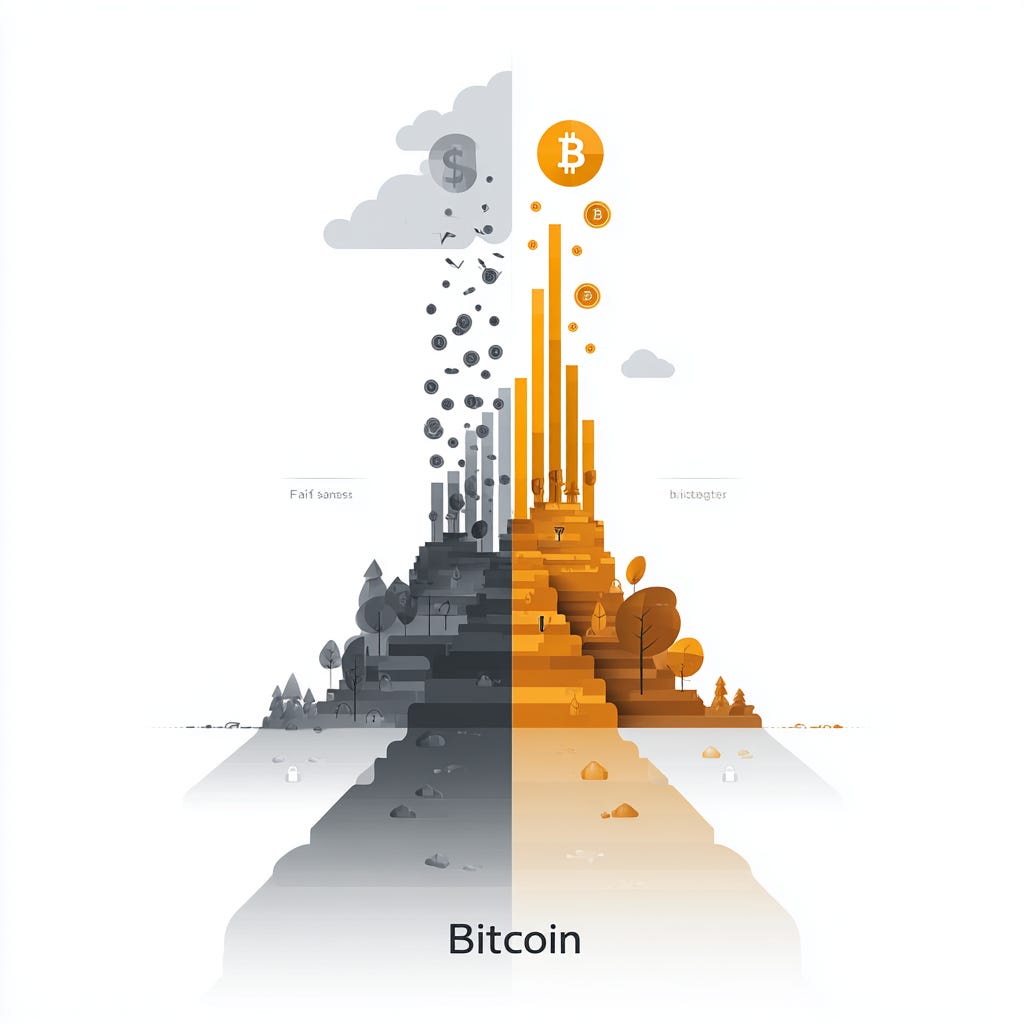Overcoming Common Objections to Using Bitcoin as Retirement Savings
Bitcoin as retirement savings still sparks heated debates. Supporters point to its scarcity, decentralization, and historical performance, while critics raise concerns about volatility, regulation, and long-term viability. If you’ve ever brought up the idea of using Bitcoin for retirement planning, chances are you’ve heard a version of these objections:
“It’s too volatile.”
“The government will ban it.”
“It’s too complicated.”
“What if Bitcoin goes to zero?”
Let’s tackle these head-on and see why these concerns, while understandable, may not be deal breakers.
Objection 1: “Bitcoin is too volatile for retirement savings.”
Volatility is real—Bitcoin’s price can swing wildly in the short term. But volatility alone doesn’t determine whether an asset belongs in your retirement plan. What matters is long-term return potential and risk-adjusted strategy.
Historical Perspective: Despite stomach-churning drops, Bitcoin has been the best-performing asset of the past decade, outpacing stocks, bonds, and gold.
Time Horizon Matters: Retirement savings often span decades. Short-term volatility becomes less important when the goal is preserving and growing wealth over 20–30 years.
Position Sizing: Nobody is suggesting you put 100% of your retirement into Bitcoin (unless you want to). Many start with 1–5%, then adjust based on conviction and risk tolerance.
A diversified retirement portfolio can include Bitcoin because of its asymmetric upside—not despite its volatility.
Objection 2: “The government will ban it.”
This fear has circulated for over a decade, yet Bitcoin continues to gain legal clarity and institutional adoption.
Game Theory in Action: Major U.S. institutions now hold Bitcoin ETFs, and companies like Fidelity and BlackRock provide Bitcoin exposure. Banning Bitcoin would hurt powerful financial interests already invested.
Global Competition: If one country bans Bitcoin, others can embrace it. El Salvador already made Bitcoin legal tender. Game theory suggests nations competing for innovation and capital will avoid hostile policies.
Enforceability Problem: Bitcoin lives on a decentralized, borderless network. Governments can regulate entry/exit points like exchanges, but banning the protocol itself is nearly impossible—just like banning the internet.
Regulation is far more likely than prohibition, and regulation typically signals legitimacy rather than extinction.
Objection 3: “It’s too complicated for ordinary people.”
Yes, Bitcoin introduces new concepts: private keys, cold storage, multi-signature wallets. But so did online banking when it first appeared.
User-Friendly Tools: Modern wallets and custodial solutions make Bitcoin storage simpler than ever. Hardware wallets come with guided setups, and multi-sig solutions add security without complexity.
Education Curve: Learning basic Bitcoin security takes a weekend, not a degree in cryptography.
Professional Custodians: For retirement accounts, Bitcoin IRAs and institutional-grade custodians handle complexity for you, often with multi-sig security and insurance.
The learning curve exists, but it’s shrinking rapidly.
Objection 4: “What if Bitcoin goes to zero?”
This is the ultimate worst-case scenario—and it’s worth considering seriously. But let’s look at the facts:
Network Effects: Bitcoin is the most secure computing network on Earth, with global adoption by individuals, corporations, and governments. Its Lindy effect (survival = higher future survival odds) grows stronger every year.
Scarcity and Demand: Bitcoin’s fixed 21 million supply and growing global demand give it unique monetary properties unmatched by fiat or gold.
Tail Risk vs. Fiat Risk: Fiat currencies always go to zero eventually through inflation or collapse. The risk may actually be higher in not holding Bitcoin for long-term savings.
Risk cuts both ways: the risk of Bitcoin going to zero versus the certainty of fiat losing purchasing power over time.
Objection 5: “It’s just speculation, not real money.”
Critics argue Bitcoin isn’t “real” because most people still save and transact in dollars. But every form of money in history followed the same adoption path:
Collectible/Speculative Phase – People hold it as a curiosity or hedge.
Store of Value Phase – More people save in it, expecting purchasing power to grow.
Medium of Exchange Phase – Widespread payments use emerges.
Unit of Account Phase – Prices are denominated in it.
Bitcoin is between phases two and three. As adoption grows, volatility declines, making it more suitable for everyday use.
A Practical Approach to Using Bitcoin for Retirement
Rather than an all-or-nothing decision, here’s a balanced strategy:
Start Small: Allocate 1–5% of your retirement portfolio to Bitcoin.
Use Tax-Advantaged Accounts: Bitcoin IRAs or trusts can shield gains from taxes.
Dollar-Cost Average (DCA): Buy regularly instead of trying to time the market.
Secure Your Holdings: Learn self-custody or use reputable custodians with multi-sig.
This approach captures Bitcoin’s upside while managing risk prudently.
Conclusion: The Bigger Risk Might Be Ignoring Bitcoin
Every innovation—from the printing press to the internet—faced objections before mainstream acceptance. Bitcoin is no different. But ignoring it because of initial skepticism could mean missing the most powerful monetary technology of our lifetimes.
For retirement savers, Bitcoin isn’t a gamble; it’s an asymmetric bet on financial sovereignty, inflation protection, and the future of money itself.
If you want to go “all in” or you are already all in Bitcoin, you’ll want to read my book Bitcoin Retirement & Estate Planning for a deep dive into the topic.
Not financial or legal advice, for entertainment only, do your own homework. I hope you find this post useful as you chart your personal financial course and Build a Bitcoin Fortress in 2025.
Thanks for following my work. Always remember: freedom, health and positivity!
Please also check out my Bitcoin Fortress Podcast on all your favorite streaming platforms. I do a weekly Top Bitcoin News update every week on Sunday, focused on current items of interest to the Bitcoin community. Please check it out if you haven’t already. Also now on Fountain, where you can earn Bitcoin just for listening to your favorite podcasts.
Also, check out my books:
Follow me on Nostr:
npub122fpu8lwu2eu2zfmrymcfed9tfgeray5quj78jm6zavj78phnqdsu3v4h5
If you’re looking for more great Bitcoin signal, check out friend of the show Pleb Underground here.


